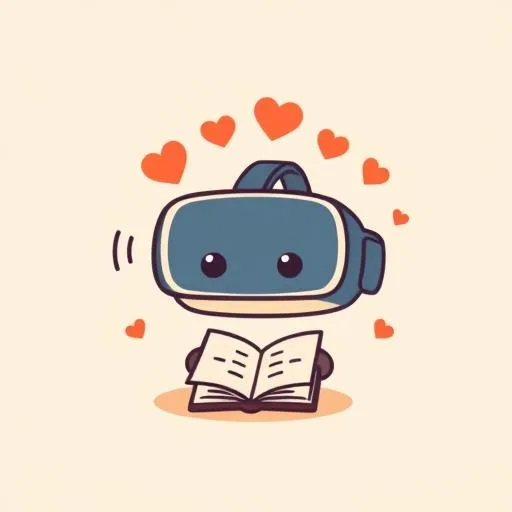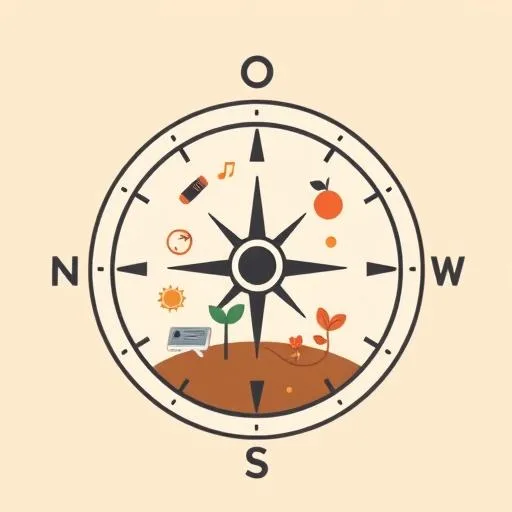Have you ever thought about how we pass down our stories? We tell them over dinner, read them from worn-out books at bedtime, and piece them together from old photos. But what if a story wasn’t just told or read, but felt? What if you could step right inside a memory? You know, it got me thinking—how might this reshape how we talk about tough feelings? So, when I stumbled upon this VR experience called ‘Blur,’ which has been the talk of the town at Venice Immersive, honestly, it blew my mind! It’s a mind-bending blend of virtual reality and live performance that dives headfirst into grief and memory. And it got me thinking—not just about the future of entertainment, but about the future of empathy and how we guide our kids through life’s most profound moments.
How Does VR Storytelling Help Us Process Grief and Memory?
Imagine a world where resurrected mammoths roam. Science can mend a broken heart—or so it promises. This isn’t a sci-fi blockbuster; it’s the surreal, dream-like journey of ‘Blur.’ Created by the visionary duo Craig Quintero and Phoebe Greenberg, this isn’t a passive experience you just watch. It’s a hybrid world of VR, AR, and live theatre. It pulls you right into its core. It’s a piece of art so powerful that even without winning an award, it dominated every conversation at the festival. Why? Because it dares to ask the biggest question of all: In our quest to overcome loss with technology, what part of our humanity do we risk losing?
‘Blur’ doesn’t hand you answers. Instead, it presents fragments and flashes—a world of human-animal hybrids and AI-governed facilities—that make you grapple with the ethics of it all. It’s a story that unfolds not as a straight line, but as a feeling, an atmosphere. It’s the kind of bold, immersive storytelling that makes you step out, blinking, into the real world and see everything a little differently. It’s a powerful reminder that sometimes the most important journeys are the ones that happen inside our own hearts.
Why Is Storytelling a Timeless Tool for Healing and Hope?

That feeling—of grappling with big emotions—is something fundamentally human. On a clear, warm day like today, watching the leaves just beginning to think about turning, it’s easy to feel reflective. And it strikes me that what ‘Blur’ is doing with futuristic tech is tapping into an ancient truth: we heal through stories. It’s not just a poetic idea; it’s backed by some incredible research. Studies show that the very act of creating a narrative around loss—what experts call ‘making sense of things’—is a powerful tool for processing grief. As one study puts it, storytelling helps us “make order of disorder and find meaning in the meaningless.” It’s how we navigate the fog.
Another piece of research I came across highlights how digital storytelling can be a game-changer for bereaved family members, giving them a space to articulate their feelings and retell their story until it finds its place. (Source: NCBI). This confirms that whether we’re writing in a journal, sharing memories with loved ones, like those quiet talks after school, or stepping into a high-tech world like ‘Blur,’ the act of framing our experience is what allows us to move forward. It’s how we connect the dots of our lives and find the light again.
How Can Parents Use VR and Storytelling to Foster Empathy?

So, what does a cutting-edge VR experience have to do with our everyday parenting? EVERYTHING! It’s easy to look at new tech and see only distraction or escapism. But what if we saw it as a new kind of paintbrush? A new set of building blocks? Experiences like ‘Blur’ show us that these tools can be used to build worlds that foster deep, profound empathy. They can be conversation starters for topics that are often too big for words.
Instead of shielding our kids from complex feelings like sadness or loss, we can look for ways to explore them together in a safe space. Imagine using an interactive story to talk about what it means to miss someone, or to explore the idea of memory. It’s not about replacing real-world connection, but about enhancing it with tools that speak our kids’ language. These new forms of storytelling can give us a shared vocabulary for life’s toughest, most important lessons.
Here’s a simple idea we tried: Why not try a ‘What If’ story game at dinner? Start a sentence like, “What if we could visit a memory for just one minute… which one would we choose and why?” It’s a playful way to get everyone sharing and thinking about the stories that shape us, no headset required!
What Does the Future Hold for Technology, Storytelling, and Hope?

The true genius of ‘Blur’ is that it ends with a question mark, not a period. It doesn’t tell you what to think; it invites you to think. And isn’t that our biggest goal as parents? We’re not here to give our kids a perfect, pre-packaged map of the world. We’re here to give them a compass of curiosity, a backpack of resilience, and the courage to ask their own incredible questions.
The future of technology and storytelling isn’t something to fear. It’s a wide-open field of possibility. It’s an invitation to connect, to feel, and to understand ourselves and each other on a deeper level. By embracing these new tools with open hearts and curious minds, we can help our children become more empathetic, more thoughtful, and more beautifully, wonderfully human. It’s about giving our kids the tools to navigate life’s storms with heart. And that is a story worth stepping into, together.
Source: ‘Blur’ Gets My Vote At Venice Immersive, Forbes, 2025/09/06
